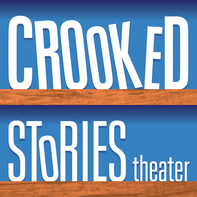FIRST GENERATION (5-page short science-fiction screenplay) by Mark Renshaw
When a female android takes her pedroid dog in for repairs, an accident turns her world upside down and reveals her entire existence has been a lie.
Another script from Week Two of the Simply Scripts annual Writer’s Tournament that I completely gushed over was Mark Renshaw’s futuristic candy-for-the-eyes sci-fi tale, First Generation.
Falling under Week Two’s theme of BLOOD IS THICKER THAN WATER, Mark was assigned sci-fi for his genre while also being assigned the following three items to include in his story: an ankle monitor, a veterinarian and a repair shop. Though the criteria assigned seemed quite daunting, Mark was up to the task, somehow finding a way to weave his three items seamlessly into an extremely unique, futuristic and yes, very cute and romantic love tale.
We open in a baby nursery, where a newborn is given a small, mechanical ankle bracelet, applied by a robot hand operating from the ceiling above.
We’re then introduced to the world in which the story is set in – it’s written and described in a way that the reader can EASILY picture it. So much so, that it almost feels like you’re there; jam-packed with holographic signs, flying cars and kids riding hover boards, it feels like Back to the Future meets The Jetsons.
Arriving at PETE’S PEDROID REPAIR SHOP, we meet Evie, who leaves her 1957 Chevrolet Bel Air convertible, entering the repair shop with her bulldog tagging along. What’s a pedroid, exactly? We find out as Evie enters the shop – animals of all kinds crawling and flying around, it looks like something out of Ace Ventura: Pet Detective.
We meet Pete, the owner of the shop, who flicks a parrot off his shoulder as he tends to Evie.
PETER
How may I assist you, madam?
EVIE
My pedroid unit is behaving
erratically.
Peter pats a workbench. The Bulldog leaps onto it. He grabs the dog’s tongue and gives it a yank. It stretches out while the dog’s head tilts back and opens to reveal electro-mechanical components.
But, before he can repair the pedroid, his ankle unit starts to malfunction. At the same time, Evie also has a malfunctioning ankle unit – in a meet-cute moment, their malfunctioning ankle units react magnetically, drawing their ankles together. As they try to pull apart from each other, their flung in opposite directions – Evie hits the floor hard, banging her noggin as her robot ankle is busted open, the exposed wires sparking, fluid spewing.
But while shaking off the cobwebs, her vision becomes blurry and her perception of reality alters – no longer are we in this colorful, futuristic reality but we’re in the present day. The pedroid shop is now a dingy repair shop. Her fancy convertible is now a beat-up jalopy. And her robot ankle is no longer spewing robot fluid – it’s now bleeding. She’s 100% human.
Neither Pete nor Evie know exactly what’s going on. She asks if Pete can fix them up, but he only knows how to fix pedroids – they’d have to go to a “humdroid” repair shop aka hospital. En route, in the back of an ambulance, Pete is seeing the same depressing world that Evie is seeing, surely a product of their ankle units malfunctioning. Is this the real world? And are their ankle units merely altering their perception of reality? Creating a better, virtual alternate reality?
They gaze at the depressing scenery as the vehicle clunks and stumbles along. Pete turns to Evie with fear in his eyes.
PETER
What’s happening to us?
She reaches out, her hand finding his. They clasp hands like it’s a life line.
EVIE
It’s okay. They’ll fix us.
They have to.
At the medical clinic, the furniture old and worn, paint peeling off the crummy walls, Peter and Evie each lie in hospital beds. Instead of human doctors, they’re treated by DOCBOTS rather than actual human doctors – rusty, robotic arms operating from the ceiling, wrapping up their ankles in bandages rather than “repairing” them.
Unfortunately for Pete and Evie, they’re rare, first generation “models” and the technology to build and repair them has been lost. They can, however, self-repair minor damages. Instead of repairing them, the DOCBOT offers them new ankle units (like the babies in the opening scene).
DOCBOT (V.O.)
With these, I can monitor you, and they
make your limited lifespan more tolerable.
However, for your own safety, I do not
recommend you two come into close contact
again. Without them, you will continue to
experience conflicting sensations. The
environment is beyond our ability to repair.
Your existence will be disagreeable.
Now fully aware that they’ll remain stuck in this cruel and depressing-looking reality without the ankle units, they’re forced to make a decision – but if they choose the ankle units and this better reality, these two lovebirds will never be able to see each other again. So, they make their decision…
… Which I won’t give away in this review. You may be able to see where it’s going, but I highly recommend checking the rest out for yourself. Though the alternate reality paints a bleak picture of the future, we learn that nothing beats the feeling of being human and feeling human sensations… such as love.
BUDGET: Medium. Some may look at this and think the story would require a higher budget, and it most likely would considering the futuristic, sci-fi atmosphere of the story. And I normally review scripts with lower budgets, but due to the insane creativity and uniqueness of the story, I had to give this one a review. As I mentioned, this would make a great animated film as it may keep the budget sensible. But, if the filmmaker decides to go live-action, it would be a great opportunity for a visual effects artist to show off their stuff.
ABOUT THE WRITER: Mark Renshaw is an award-winning screenwriter and producer, his sci-fi TV pilot script “Nearscape” reaching the semifinals of the prestigious Page Awards and 2nd round of the Austin Film Festival. His short script, “Cyborn” was the inaugural winner of the Inroads Screenwriting Competition. Reaching the top 4% of the BBC’s Open Drama Submission, Mark has also been added to their list of promising writers. As a producer, his first two short films, “No More Tomorrows” and “Surrender” have enjoyed successful runs on the independent circuit, garnering several awards. His latest sci-fi short, “The Survivor: A Tale From the Nearscape”, which he wrote and produced, currently has a worldwide distribution deal with Meridian Releasing, also serving as a proof of concept for a TV series. Mark has also had several short stories published, including “Ragnarok” by Cohesion Press in the horror anthology, “SNAFU: Resurrection”. You can watch check out Mark’s produced films and scripts on his website at www.mark-renshaw.com.
Read: FIRST GENERATION (5-page short science-fiction screenplay)
Discuss this script on the discussion board.
*This screenplay may not be used or reproduced for any purpose including educational purposes without the expressed written permission of the author.
Find more scripts available for production.
About the Reviewer: Michael J. Kospiah is the award-winning screenwriter of critically acclaimed indie-thriller, The Suicide Theory (79% Rotten Tomatoes – available on Amazon Prime, Itunes, Google Play, etc) and 2020’s upcoming Aussie thriller, Rage. His horror feature, They Never Left is currently in development.






